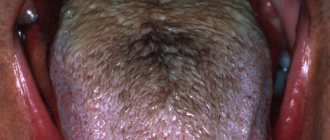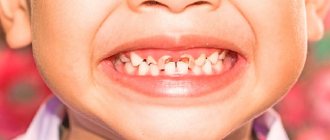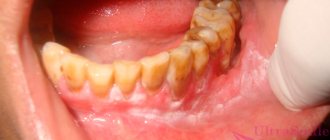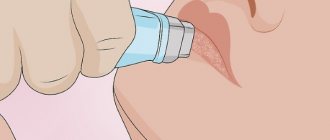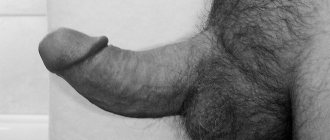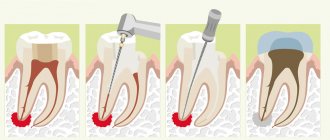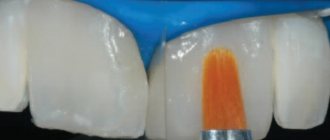Almost every person has noticed white bulbs. If you've ever worried about hair loss, remember that the average person loses about 100 hairs a day. Shedding always happens. This does not necessarily indicate a problem. Any hair loss at the root will contain a bulb that is present in the follicle. The white hair bulb is usually not noticed until shedding becomes excessive. In this case, you can examine the fallen strands. Hair falls out with a white bulb - in the pages we will talk about what this means.
Normal or disease?
Trichologists say that daily loss of up to 40-60 hairs is considered normal, since hair tends to renew itself.
Body tissues have their own lifespan. Curls go through four states: growth, dormancy, dying, and loss. In a healthy person, 85-95% of growing hair, 1.5 - 2% of hairs are at rest, less than half a percent is occupied by “obsolete” curls. They are found during daily combing, washing your hair, running your hand through your hair, and on clothes.
Owners of long strands or thick curls have many reasons for concern: it is impossible to physically notice when dead strands fall out: they get tangled in the general mop and remain in the hands only when washing your hair. A person thinks that there are many of them, but this is not so.
Pathological hair loss can be determined after washing, drying, and styling curls. To do this, run your hands over your hair and see how many hairs with a white tip are on your palm. Only if there are more than 20-30 of them, they talk about alopecia - unhealthy hair loss.
Causes
The cause of the disease in humans is the entry of the fungus Trichosporon beigelii into the body. In addition to this fungus, the disease can also be caused by others from the genus Trichosporon:
- Trichosporon giganteum;
- Trichosporon ovale;
- Trichosporon cerebriforme.
Since fungi prefer hot climates, you can become infected with white piedra while traveling in countries such as the USA, Africa, Japan, and Transcaucasia. Among European countries, the fungus can be caught in Hungary, Great Britain, and Spain.
The disease is transmitted from sick to healthy. Men get sick more often. The fungus is transmitted in the following ways:
- Through other people's combs;
- Through other people's head units;
- lubricating hair with oils and dairy products.
Trichosporon beigelii spores are located around the hair. Only a small part of the fungus penetrates the hair cuticle.
Hair with a white tip is falling out: what to do?
When a whole strand appears on the comb, you should look at it carefully. Has your hair fallen out with a white tip? This suggests that the curl has not broken, but has outlived its useful life. The white color is not the root, as many people think, but a mature hair follicle that is ready to fall out. She will no longer be able to hold the hair and nourish it with vitamins and microelements. A follicle remains in the scalp, from which a new curl will later grow. If curls are lost intensively, then the follicle freezes - new curls may not grow.
The pathological process of alopecia does not go unnoticed: after a short time, the hair becomes noticeably thinner, and bald spots appear in place of ungrown curls. In this case, the help of doctors is needed: a trichologist. dermatologist, endocrinologist.
Hair and hair growth
Hair is made of a tough protein called keratin, while the hair follicle anchors each hair into the skin. The hair follicle forms the basis of the hair follicle. However, hair color is created by pigment cells that produce melanin in the hair follicle. As we age, pigment cells die and hair eventually turns grey. Blood vessels nourish the cells of the hair follicle, which deliver hormones that change hair growth and structure. The average rate of hair growth is about one and a half inches per month. There are three phases in which hair growth occurs;
- Anagen is the growth phase characterized by the majority of hair growth at any given time and lasts for several years.
- Catagen is a transition phase where hair growth slows down over several weeks and the hair follicle shrinks.
- The telogen phase is the resting phase. Here the old hair is separated from the hair follicle and hair growth stops. After this, the new hair begins the growth phase and displaces the old hair.
The bulb is located at the bottom of the hair follicle and consists of three separate parts: the papilla, which is the lowest part of the bulb, it connects to the root of the follicle, delivering nutrients, oxygen and energy from the blood vessels; the germinal matrix is the second layer where cells divide to produce new hair; and the root sheath, which consists of an inner and outer root sheath.
This part protects the newly formed hair strand and serves as a support for the hair structure. There is a difference between this light bulb and the light bulb that fell out. This means that the bulb that is visible at the end of a fallen hair strand contains only the root sheath and base of the hair strand.
The hair follicle forms the basis of the hair follicle
Causes of White Tip Hair Loss
There are many reasons why white-tipped hair falls out. Curls quickly respond to changes in physical and psycho-emotional health. A person facing such a problem should undergo a comprehensive examination. White-tipped hairs may fall out due to:
- states of nervousness, frequent stress, anxiety, insomnia, lack of sleep, non-compliance with the regime;
- hereditary factors;
- hormonal imbalances, increased levels of hormones, pregnancy and childbirth, menopause;
- various diseases: dermatological, oncological, respiratory;
- exposure to medications: antibacterial drugs, narcotic drugs, anesthetics;
- unfavorable external influences: area of residence, ecology, exposure to direct sunlight, frequent use of chemical styling products, over-drying with a hairdryer;
- improper nutrition: vitamin deficiency, diets, uneven intake of proteins, fats and carbohydrates in the body;
- bad habits: smoking, excessive drinking.
Trichoclasia nodosa
Trichoclasia nodosa affects up to 17% of women living in megacities
The medical term “trichoclasia nodosa” hides a disease that manifests itself as excessive hair fragility. Trichoclasia is often confused with split hair, but with this disease the hair shaft breaks off at a distance of 7-8 cm from the roots.
Note! Trichoclasia nodosa affects hair not only on the head; mustaches, beards and even pubic hair can get into the “paws” of the disease.
Brown hair with white tips or strands densely affected by white spots may indicate that longitudinally located breaks have appeared on the hair cuticle, which will then cause damage to the cortex.
At the site of the break, a small “knot” forms, which, when combed, becomes a place where the hair breaks off. Trichoclasia does not lead to damage to the structure of the rod; only the medulla is missing at the site of the breakage.
Pseudo-diagnoses and diagnosis
Photo of hair diagnostic procedure
The disease occurs entirely due to external influences:
- shampoos unsuitable for hair type;
- systematic creation of backcombing in hair;
- “hot” styling methods;
- long-term UV radiation.
In extremely rare cases, the cause of trichoclasia is congenital pathology or genetic diseases, such as Netherton's syndrome.
Externally, the disease is similar to a fungal infection of white or black piedra. Microscopic fungus also accumulates on the shaft, but does not lead to hair breakage. The possibility of such infection can be eliminated through laboratory tests.
Microscopic examination of the hair shaft allows us to exclude the possibility of monilethrix and pseudomonilethrex, which are manifested by brittleness and increased dryness of hair. The rod damaged by monilethrix has a heterogeneous structure, thinning and swelling are also easily noticeable.
A disease such as trichonodosis is manifested by the formation of nodules in which dust, fat and microorganisms accumulate. The difference between trichoptilosis and trichoclasia is that the first disease is characterized by splitting at the ends of the hair, and the second - at the breakage site.
Treatment of trichoclasia
To treat trichoclasia, vitamin therapy is prescribed - taking vitamins E and A. Among traditional methods, oil wraps, masks with honey and cream have proven particularly effective.
Coconut oil is a storehouse of microelements and antioxidants that can solve several problems of your curls at once.
Warm coconut, olive or sea buckthorn oil is applied to the entire length of the hair and insulated with a heated terry towel. After 2 hours, the remaining oil mixture is removed with warm water and mild shampoo.
An oil solution of vitamins E and A, as well as essential oils of tea tree, ylang-ylang and citrus fruits, which are added in an amount of 2-3 drops for every 2 tbsp, will help make the wrap more effective. spoons of a mixture of base oils.
To “vitaminize” the mask, you can use not only an oil solution, but also vitamins in gelatin capsules, which are carefully opened with nail scissors.
Herbal decoctions (burdock root, chamomile and nettle) are useful and can be used as a base for a mask or rinse. A tablespoon of herb is poured into a glass of boiling water and infused in a thermos for 2 hours. Dried herbs can be boiled in the same proportion by adding boiling water and continuing to simmer over low heat for 10 minutes.
To prepare the decoction, you can use aromatic linden blossom, which will be appreciated by owners of light curls.
For dry hair, masks containing lemon juice, alcohol and henna, which dry out even more, are contraindicated.
Hair falling out without a white tip: what to do?
Sometimes hair falls out without a white tip, which is a legitimate concern. If a hair falls out with a black bulb, this means that it has not yet aged, the curl was not ready for physiological renewal. If you experience frequent loss of curls with black ends, you should definitely find out the cause with your doctor, otherwise you may lose your hair completely.
If the comb shows strands that have neither a black nor a white bag, and identical ends are visible on both sides, then we can talk about increased fragility of the curls. Proper care, as well as following the advice of a trichologist, most often helps to solve this problem.
Snow-white tips as a sign of section
Snow-white dots at the ends of the hair may indicate the start of the sectioning process. Take a closer look at the small strand; if the hair looks like a whisk and has forked ends, you have all the signs of a split in your hands.
There is also another common method of determination - twist your hair into a rope; if it is smooth and even, it means you are out of the risk zone. If you choose the 2nd method, please note that it will not give a reliable answer if your curls are styled with a cascade or ladder cut, which imply uneven length.
A small annotation to help you check for split ends
Trichoptylosis – severe split ends
We will not refute the fact that split ends and the formation of snow-white spots can be the result of careless handling of curls and the frequent use of coloring procedures and thermal styling devices. But there are a number of diseases that lead to such a deplorable state of curls, in this case the section is called trichoptilosis and requires diagnosis and treatment.
Dark hair with snow-white tips may be a prerequisite for trichoptilosis, which requires a multifaceted approach to healing
Splitting and brittleness of the hair shaft can occur due to a lack of vitamins and dehydration. Trichologists include the lack of real sleep and stress into this category of circumstances of moderate severity.
More severe diseases are anemia, parasitic and acquired contagiously.
Pay attention! Split hair can also be caused by pathology of the hair follicle, but this cause is established only in 3% of cases.
Getting rid of cross-sections - folk and cosmetic remedies
- Hairdressers and trichologists tirelessly repeat that the healing of a section consists of a haircut . The hair shaft cannot be glued together either with innovative cosmetic fluids or with tried and tested grandma’s recipes.
Advice! If split hair occurs at the ends, choose a haircut with hot scissors, which “seal” the ends and allow the hairstyle to remain attractive for a long time. But it is important to keep in mind that a problem solved on the outside requires a solution on the inside.
- Among all the contrast of folk recipes for hair, those that contain oils and dairy products are worthy of attention.
- After washing your hair, apply heated natural yogurt to slightly damp strands. Warm your head with a plastic cap and after 2 hours, rinse with warm water. You can get rid of the nasty smell of sour milk using a solution of lemon juice, which is used as a rinse.
This is interesting: Allergy to hair dye: how to avoid irritation
Kefir is one of the most popular products that allow you to prepare an effective mask with your own hands.
- Aloe provides good hydration to dry hair. Grind the aloe leaf in a blender, combine with honey and castor oil, taken 1 tbsp. spoon, 1 tbsp. spoon of cognac and yolk. A homogeneous mass is distributed over the hair and left for 1-1.5 hours.
It is no coincidence that aloe lives on household windowsills; its moisturizing properties are intensively used in skin and hair care
- Serums and hair fluids, we hear these words more and more often from TV screens . The first is a concentrated nutritional composition that is applied to wet hair. Most products include proteins, lipids, and plant extracts, which allows you to get an instant visual effect.
Serums and fluids for hair ends have now been submitted to the consumer tribunal by virtually all cosmetic concerns
80% of the fluids consist of water, which allows you to provide sufficient moisture to the hair. The product can be applied to both wet and dry ends. The advantage of fluids is that they do not contain oils, which means they can be used on thin curls that lack volume.
Advice! Due to the fact that the cross-section indicates dehydration of the body, for the purposes of prevention and healing, consume more than 2 liters. water. During the heating season and hot summer days, systematically treat the ends with mineral or thermal water.
To moisturize your hair, thermal water is suitable, which we use for facial skin (cost - from 230 rubles)
Treatment of alopecia
People facing loss of curls turn to trichologists with the question: hair with a white tip is falling out - what to do in this case? Experienced specialists recommend that the patient undergo a dermatological examination to rule out skin infections; take hormone tests and get an endocrinologist's opinion. Women should consult a gynecologist and, if necessary, adjust the dosage of hormonal contraceptives.
With the results of the research, you need to go to a trichologist, who will write out a treatment plan. Most often, in case of hair loss with a white tip, medications are prescribed that stimulate the growth of curls and stop the process of alopecia (growth activators, specialized complexes for restoring hair); physiotherapeutic (ozone treatment, mesotherapy, use of laser technologies) and cosmetic procedures that strengthen hair (massage shower, use of medicated shampoos, balms, rinses, masks).
Which doctor should I contact for alopecia?
A doctor who deals exclusively with diseases of the scalp is called a trichologist. Trichology is an additional specialization of dermatology-cosmetology, so if such a specialist is not available (and in small towns and villages this is a common problem), you can seek advice from a dermatologist.
In addition, the following can provide significant assistance with hair problems:
- therapist;
- endocrinologist;
- gynecologist;
- andrologist;
- immunologist;
- rheumatologist;
- gastroenterologist
Important! Treating hair loss takes time. If the problem is not too serious and advanced, then it will take about three months for the improvement in the condition of the hair to become noticeable. (About a month to start the process of normal keratogenesis in the bulb; another month for the hair to grow to the surface of the skin and become noticeable; and another month for it to enter the tangible volume of curls.) In difficult cases, it may take six months to get results , and a year of continuous work between the patient and the specialist.
Thick hair: care rules
After treatment, hair follicles and roots require special nutrition and protection.
To make your curls look healthy, you need:
- Wash them no more than 2-3 times a week with products containing natural ingredients.
- Use purified water for washing (hard water leaves mineral deposits on curls).
- Wash your hair with warm or cool water: hot water destroys the hair follicle and the hair falls out with a white tip (photo can be found on the Internet)
- Take a contrast shower, rinse your hair with water or herbal decoction at room temperature.
- Use a wooden comb or natural bristles (they are less damaging to the hair follicles than plastic and metal ones).
- Use personal hygiene items to avoid getting a fungal infection.
- Avoid chemical dyes.
- During the period of bright sun, cover your head from the negative influence of bright rays.
- Humidify the air in the room while heaters and central heating radiators are operating. A dry atmosphere destroys the follicle, curls become thinner and break more often.
- Eat right, enriching the body with magnesium and calcium, proteins, iron.
Somewhere in the middle of the hair a white dot appears.
Answers:
evil dwarf
secondly
Danai KHAN
just cut with scissors!!!
Lenchik
They don’t split, they break, these are different things, you need to strengthen them
Tasha
I had this after chemo
Ksyusha Myazina
This is brittle hair. Then at this place the hair will begin to split. The solution is to take multivitamins, buy a good balm/mask, and, if you already have a lot of hair like this, get a haircut.
Svetlana Khabipova
Yes, you really need to cut your hair. And for several months do not dye, do not perm, do not use hairspray, gel or hair dryer. First, strengthening masks 2 times a week, it is better to do it yourself, for a month. And then once a week, also for about 2 months. And then for prevention, once a month! Vitamins won't hurt either. Yes, and take care of your nerves - it also affects your hair!
Daria Efimova
you can’t break off beyond this point, it will only make things worse, it’s better to cut off a little above it
Lily
It's a break in the hair. from its dryness and damage.
Folk remedies in the fight against alopecia
You can strengthen hair follicles, saturate the skin with nutrition, and reduce the number of hairs falling out with a white tip not only with the help of artificial components and physical procedures, but also with natural products containing vitamins and minerals.
A plant that quickly helps with alopecia is the standard onion, which contains microelements responsible for the growth of curls. Onion masks are done regularly, 1-2 times a week. The onion is peeled, grated or in a blender, then the juice is squeezed out of it. It is applied to the curls and then wrapped in a terry towel for 20 minutes.
You can add other ingredients to onion juice: honey, eggs, brewer's yeast, coconut oil. The products soften the hair and make it silky. After the mask, cosmetic clay, diluted apple cider vinegar, and a drop of lemon or orange essential oil added to the rinse mixture can cope with the smell of onions. After 4-5 regular procedures, curls will begin to fall out by 10-12%.
Another natural remedy that stimulates curl growth is sea salt. A head massage with sea salt will nourish your hair with iodine and minerals. Massage the skin with your fingers in a circular motion, making efforts to absorb the salt.
Such procedures are especially effective for oily hair: salt has a drying effect, and hair looks well-groomed for a long time. Sea salt kills bacteria and fungi, so its use is especially justified in people suffering from seborrhea or dandruff.
The third effective remedy against alopecia is burdock oil. It is rubbed into the scalp and left for 20-30 minutes, tied with a towel. Then wash off with mild shampoo.
The best way to solve the problem according to doctors' reviews
Self-medication is unlikely to give a noticeable effect, since the causes of the problem lie deeper than it seems at first glance. Ointments or balms will only provide temporary improvement. To stimulate hair growth, it is necessary to undergo complex treatment with special preparations. Taking vitamins and physiotherapy under the supervision of a specialist are also beneficial.
The mesotherapy procedure gives a good effect: medications are injected under the skin with thin needles to restore hair follicles. Hair stops falling out, becomes silky, has a healthy shine, and the hair structure becomes denser.
Vitamins will help strengthen the body
The influence of vitamins and lifestyle on the condition of hair
If you don’t have the time or opportunity to visit a specialist, you can try the following action plan:
- Review your lifestyle and improve it.
- Stop smoking and drinking alcohol.
- Reduce stress to zero and stop being nervous and worrying about or without reason.
- Provide complete and balanced nutrition.
- Take vitamins.
- Massage your head regularly.
A healthy lifestyle will strengthen your immune system
Treatment of hair problems should be comprehensive
Massage and mask recipes: with burdock, red root and calamus
A simple scalp massage can produce amazing results. Make smooth rotational movements with your fingertips. Fingers should be pressed tightly, but not pressed. The massage is done in the direction from the crown to the back of the head and from the forehead to the sides. If you have time and desire, you can try folk remedies based on mumiyo, oak bark, egg yolk or burdock oil.
Massage stimulates blood circulation
Fashionable dyeing techniques
Experts do not stand still: every year more and more techniques for dyeing, highlighting and styling hair are being invented and refined.
Modern techniques allow you to create the most natural appearance, or, conversely, a bright, extravagant image.
Let's look at the most popular of them:
Ombre.
Ombre is a transition from dark hair on top to lighter hair on the bottom. The main feature of this coloring is the fuzzy transition boundary between colors, creating a gradient effect. In the ombre technique, the transition begins approximately from the middle of the hair.
This type of coloring is suitable for women with dark roots who want to lighten the ends a little without coloring the rest of their hair.
Shatush.
Shatush is dyeing using color stretching with mandatory backcombing of the hair. The shatush technology uses two colors that are close to each other, so the transitions between them are barely noticeable.
Balayage.
According to the rules of the balayage technique, the dye is applied to the hair with a brush vertically and exclusively along the top layer of curls. It is intended to change only half of all hair, which creates a voluminous effect on any hair length.
Coloring.
The coloring technique is dyeing hair in several different natural shades. There is also a type of creative coloring in which any shades can be used: it all depends on the girl’s choice.
All of the above techniques are put into practice every day and give excellent results. To achieve the best effect, such procedures should be carried out in the salon by a qualified specialist.
Partial staining
Partial coloring is a trend for 2022. If you've been wanting to change up your look or try something new, here are three trendy partial color techniques for you.
- highlighting;
The technology involves complete or partial dyeing of individual strands.
- armoring;
Includes 2 techniques: highlighting and multi-color coloring, which will give the natural color expressiveness, without adding sharp transitions of shades.
- glare coloring.
The technique involves lightening several strands to create the effect of sun-bleached hair. The play of artificial sunlight makes the whole look youthful and feminine.
Ombre, shatush, balayage and coloring also refer to partial coloring.
If you don't know which technique to choose, contact a specialist. He will be able to give the right advice and help you decide on the coloring technique.
Types of popular lightening techniques
Among the methods of lightening hair ends, 3 techniques have gained worldwide fame and popularity:
- Ombre - involves a smooth stretch of color from dark (base) to lighter (at the tips), for this, at least two other new shades are used. The ombre technique officially appeared in 2010. The first to demonstrate it was the famous American actress Sarah Jessica Parker. The stylists took the idea of coloring from surfing enthusiasts, whose curls gradually faded in the sun and grew longer, resulting in a kind of transition from the main color to the faded one. Light curls give the technique a special chic; the color of the strands “plays” and shimmers. Later, hairdressers began to experiment and several subsidiary techniques appeared - this is “sombre” (the color difference between the roots and ends differs by half a tone) or coloring the ends in bright shades.
- Balayage is not a new technique for transforming curls. Nowadays, “balayage” is experiencing a second glory; it was first learned about from French stylists back in the 70s. “Balayage” is very similar to “ombre”, but one additional tone is used, and they begin to smooth it out not along the entire length, but from the middle. “Balayage” is characterized by prominent individual strands in the face area. Stylists note that after such a transformation, the face looks at least 5 years younger.
- Dip dye is an interesting, bright coloring technique for girls under 20 years old. Outwardly, it looks as if the tips were dipped in paint, no smooth transitions or gradient. The peculiarity of the coloring is bright and caustic shades, they give their owners audacity and originality.
Any of these techniques will refresh and emphasize the individuality of the face, add charm and slight carelessness to the hairstyle. Feel like a Hollywood beauty.
Shades for dark hair
In order for coloring dark curls to highlight the advantages of your face, it is also worth choosing shades according to the color of your skin and eyes:
- brown-eyed dark-skinned women can safely use a palette of milk chocolate, hazelnut, caramel;
- fair-skinned women with dark eyes will highlight their beauty with purple and chocolate colors;
- pale skin will sparkle with new colors thanks to the color scheme of caramel, honey, amber shades, as well as the color of cinnamon;
- and ruddy cheekbones will be favorably set off by colors - chestnut, walnut, dark chocolate, mocha.
Conclusion
The presence of white dots on the hair may indicate either a careless attitude towards your curls or a serious illness that requires the intervention of a specialist. Be that as it may, such changes are your hair’s “cry” for the necessary help!
All we have to do is offer a video in this article that will answer the questions that have arisen.
Did you like the article? Subscribe to our Yandex.Zen channel
Text \ Photo Ekaterina Posted 07/10/2015
0
share:
To favorites
To print
If you want to thank, add clarification or objection to the author - add a comment!
Currently being discussed:
- Lyubov Burkina
20.08.2018
What hair color should I choose? Please give me some advice. I don't know which one I have...
- I
19.08.2018
I had eyelash extensions for 6 months and took a break. After 3 months I increased it again...
- Vasilisa
18.08.2018
Cool hairstyle
18.08.2018
Hi, can I dye my bleached hair (currently red) bright purple...
16.08.2018
Hello! I am a dark girl with black eyes. I want to dye my hair dark...
15.08.2018
The photo shows young beauties. Can older ladies have their eyebrows done? Age...
Comments »
